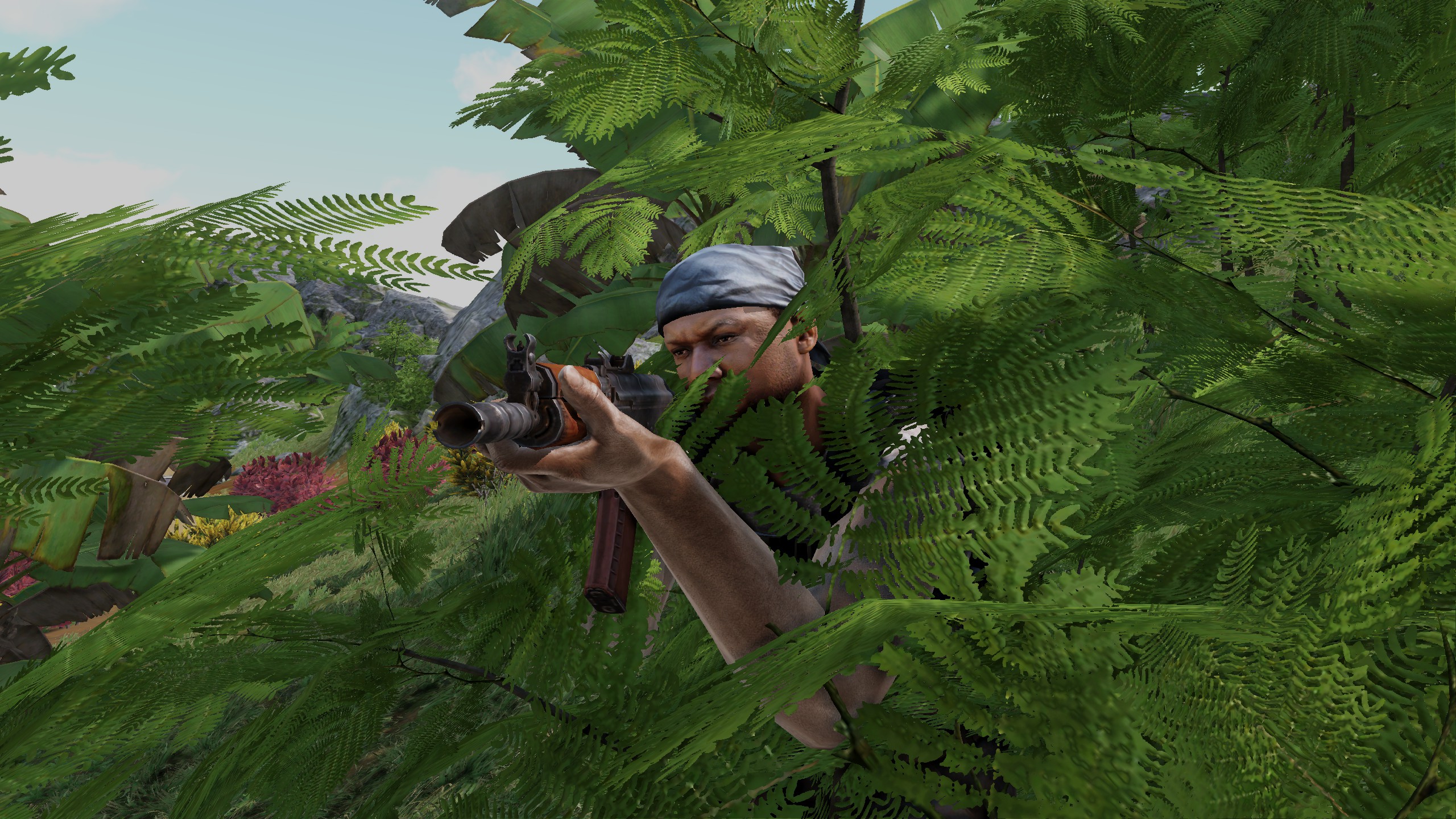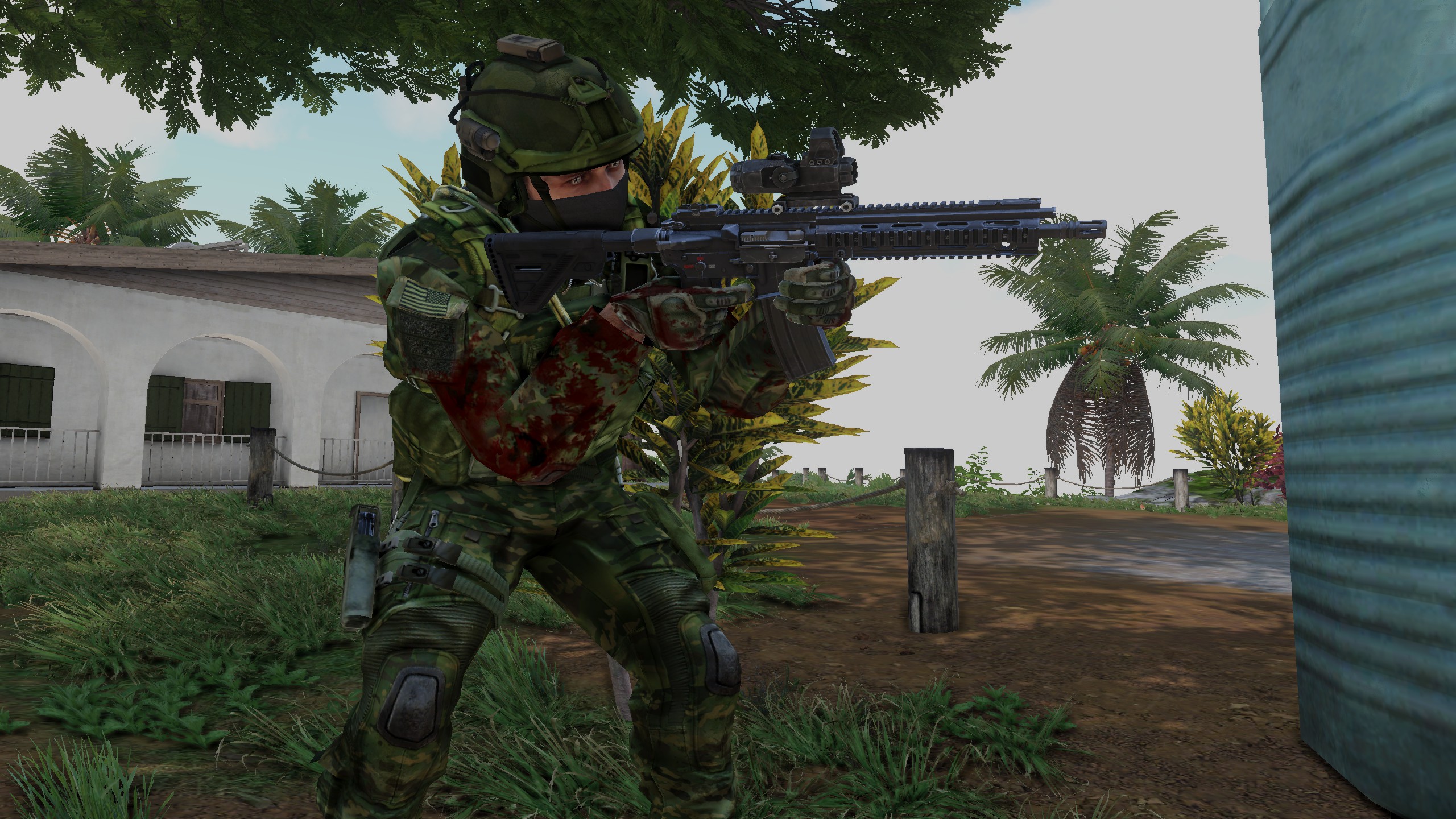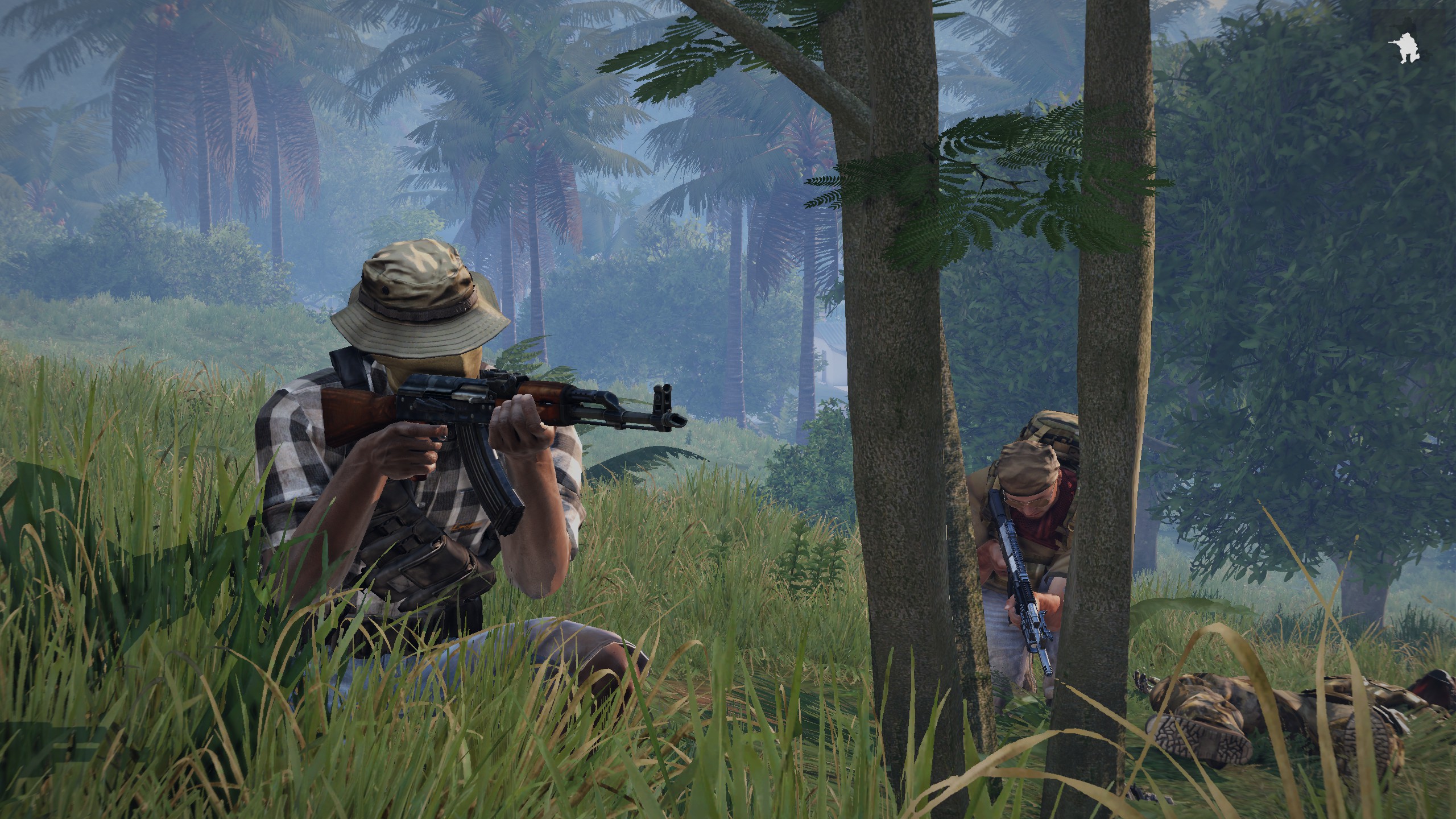How a jungle map made Arma 3 grittier in 2016
Arma 3's first expansion brought a new spirit to our favorite sim.


Along with our group-selected 2016 Game of the Year Awards, each member of the PC Gamer staff has independently chosen one game to commend as a personal favorite of the year. We'll continue to post new Staff Picks throughout the rest of 2016.
Among 2016's many gifts (I couldn't even limit my favorite games of the year to 10), it was the year that the best large-scale cooperative FPS got an awesome jungle.
Call Arma 3 a 'military simulation' if you want, but to me it's a platform for saying some military words with your buds as you wander over big, cool slabs of terrain to shoot AI targets. That terrain matters a lot, though—Arma's maps are the centerpieces for each game. They're the canvases that amateur mission makers use to create the nighttime recon missions, ambushes, tank fights, assassinations, and thousands of other scenarios that populate the Steam Workshop. Their contours, towns, regions, bridges, elevations, forestry, and other details are what give Arma's scenarios character.

When Bohemia added a South Pacific archipelago to Arma 3 this year, it made the game grittier. Anyone who played DayZ knows what it's like to get lost in Chernarus' forests, but that feeling pales in comparison to Tanoa's paranoia-inducing jungles. In places, Tanoa feels like you've stepped into Predator (there's an Easter egg to this effect, too).
Its overgrowth neutralizes some of Arma 3’s fanciest gear in a way I really like: thermal goggles and remote-controlled drones kind of suck when you’re inside a dense tropical forest with short sight lines, and helicopters have a hard time landing or spotting anyone hiding in the stuff. If Arma 3 in 2013 was about near-future tech, Tanoa nudged it closer to late-'80s warfare, where you had to wade through waist-high grass and your hands dirty rather than score kills with a recoilless prototype rifle with 10 attachments on the rail.
Tanoa has a clearer, more likable personality than Arma's other terrains, partly because it's 'just' 100km2, compared to Altis' 270km2. Arma 3's original map is massive and variegated, and it must be one of the biggest handmade environments ever released for a multiplayer FPS. But after awhile, its Mediterranean sunniness wore on me. Strafing an idyllic beach town with machinegun fire feels a little weird.
Tanoa's overgrowth makes Arma 3's gun audio all the scarier. (w/@KeenanW) pic.twitter.com/xYC82a1EeWJuly 13, 2016
I love Tanoa's identity and the atmosphere it lends Arma. Its 100 square kilometers of tropical terrain is a cover album of real-life locations like Lihir Island and Fiji: huge swathes of jungle beside a variegated mixture of plains, shoreline, and scrubland. Populating the archipelago are farms, refineries, mines, beachside villages, logging camps, ancient ruins, and a dead volcano, all ripe landmarks for Arma's scenario editor. Step into the forest in the afternoon, and you’ll hear birds and insects chattering. But at nighttime, it’s a different sound: unsettling owls and other nocturnal things punctuating a constant cricket hum. Thunderstorms drop piercing rain and sky bass, imbuing any mission with drama.

It's a setting that encourages scrappy, grounded encounters—a lot of the missions in Steam Workshop are raids on drug lord hideouts or a similar theme, taking advantage of two of the added factions, Syndikat (local drug dealers) and Gendarmarie (militarized police). Creeping around through shrubbery with guerrillas or spec ops alike feels perfectly natural.
The biggest gaming news, reviews and hardware deals
Keep up to date with the most important stories and the best deals, as picked by the PC Gamer team.
We already have a pretty clear sense of what's coming to Arma 3 in 2017: a variety of paid and free DLC with a focus on combined arms (including a return of Malden, the original Arma's terrain), and ongoing platform improvements. Modders will continue to fill in the gaps, but as an incredible year in PC gaming comes to a close I remain excited about the simple fun and tension of crawling on my simulated stomach through tall grass in Tanoa.

Evan's a hardcore FPS enthusiast who joined PC Gamer in 2008. After an era spent publishing reviews, news, and cover features, he now oversees editorial operations for PC Gamer worldwide, including setting policy, training, and editing stories written by the wider team. His most-played FPSes are CS:GO, Team Fortress 2, Team Fortress Classic, Rainbow Six Siege, and Arma 2. His first multiplayer FPS was Quake 2, played on serial LAN in his uncle's basement, the ideal conditions for instilling a lifelong fondness for fragging. Evan also leads production of the PC Gaming Show, the annual E3 showcase event dedicated to PC gaming.

